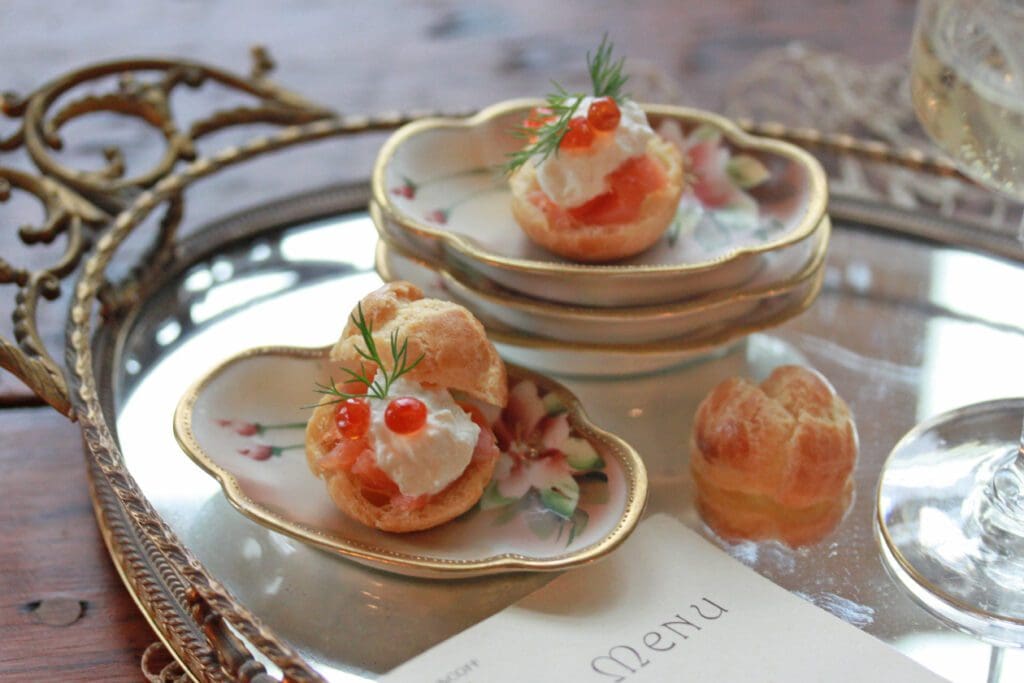
Adapted from the pâte á choux recipe in Madeleine Kamman’s The Making of a Cook, this basic formulation can be used with both sweet and savory fillings simply by tweaking the salt content a bit. Though there are different schools of thought about the ingredients that yield the maximum puff (i.e., bread flour and egg whites a la Shirley Corriher or all-purpose flour and whole eggs per Kamman), I subscribe to the Kamman approach after having tested many variations on this theme. For more about puff-baking technique and the science behind achieving the puffiest puffs, read my James Beard-nominated article on the subject. Or carry on if you’re eager to dive into this written recipe or the video version at the end of this post.
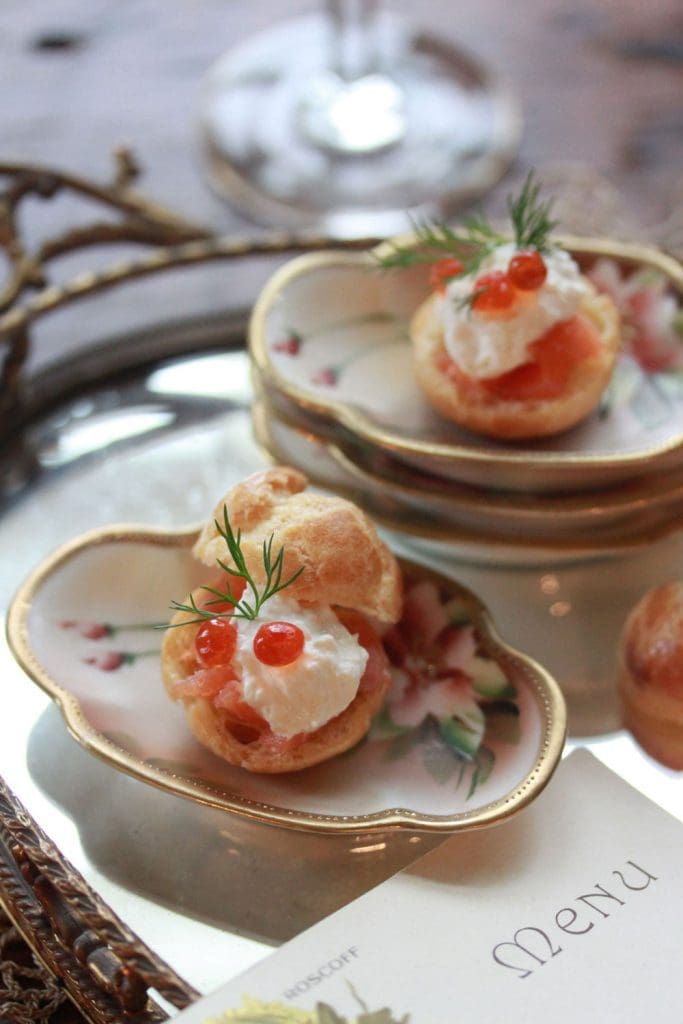
About 6 dozen (1 1/4- to 1 1/2-in/3.2- to 3.8-cm) appetizer-size puffs
Stuff for Puffs:
Egg Wash:
1 | Place a rack in the middle of the oven and preheat the oven to 400°F (204°C). Generously butter two (15 x 10-in/38 x 25-cm) cookie sheets and then rinse them under cold water. (Or alternatively, line the cookie sheets with parchment paper or silicone mats, and rinse those surfaces.) Shake off any excess water, so only scattered droplets remain on the cookie sheet surface. (Rinsing will keep the puff bottoms from scorching in the oven; plus, some say the added steam put off by the evaporating water leads to puffier puffs.)
2 | Combine 1 cup (8 oz/237 ml) water with the butter pieces and salt in a medium (3-qt/3-l) nonreactive (stainless steel or enamel-coated) saucepan. Place over medium to medium-high heat and slowly bring to a rolling boil.
3 | Remove from the heat and quickly add the flour all at once, stirring well to keep the mixture lump-free. Adding the flour all at once at the rolling boil allows the flour to absorb more water, which, in turn, means you’ll be able to incorporate more eggs later. Eggs act as the primary leavening agent in this recipe, so more eggs and less water result in puffier puffs at the end of the day.
4 | Return the pan to medium heat and dry the paste by stirring and smearing it along the bottom of the pan with your spoon or spatula. (Again, drying removes excess moisture, which will ultimately lead to higher-rising puffs.) The drying process may take as long as 7 to 10 minutes, so be patient and stir regularly to keep the paste from scorching. When dried to the proper degree, the paste should cling together in a thick mass and have a slight sheen from melted butter on the surface.
5 | Remove the pan from the heat, cool the mixture slightly, and then beat in the eggs, one at a time. (Note: As a general rule, I like to first break the eggs into a separate bowl and remove the chalazae, the white scraggly tissue that anchors the yolks in the eggs. If not removed or broken up with whisking, these pieces can become tough and rubbery upon baking. The easiest way to remove them is to scoop them out with one of the broken egg shells.) Stir vigorously to avoid cooking the eggs upon contact with the hot paste. Cooked eggs will lead not only to gritty puffs, but also to ones that are undesirably flat. To keep the mixture thick and easy to handle, only incorporate the next egg after the previous one has been uniformly absorbed by the paste.
6 | Turn the filling into a pastry bag fitted with a coupler (or 1/2-in/1.3-cm round tip) and pipe small (1-in/2.5-cm) mounds, about 2 inches (5.1 centimeters) apart, on the prepared cookie sheet(s). Alternatively, use a spoon to portion the paste, though a word of warning: this is a messy approach that invariably leads to puffs that are less consistently sized.
7 | For the egg wash: Whisk together the egg yolk and milk. Brush a small amount on top of each puff, taking care to smooth out any peaks in the dough and to avoid dripping onto the pan. (Drips will cook onto the dough and pan, and may prevent the puffs from rising.)
8 | Bake 20 to 25 minutes for small appetizer puffs (5 minutes or more for larger puffs). Pierce the sides of each puff with a small skewer in the last 5 to 10 minutes of baking to dry the puff interiors as thoroughly as possible. This way, there will be less soft, fleshy dough to remove from the insides when the puffs are done. If the puffs seem to be getting too brown, you can always drop the oven temperature to 350°F to 375°F (177°C to 191°C) to dry even longer.
9 | Let the puffs cool completely on racks. Split with a sharp knife and remove any soft dough from the inside before filling. See photos 1 and 2 in the gallery below for finished, filled puffs.
Essentially a Midwesternized gougère, this pâte á choux variation includes smoked cheddar, ham, and herbs instead of the classic Gruyère found in the Burgundian gougère. Bake as in Burgundy, however, by dolloping the dough in a generous (9- to 10-in/22.9- to 25.4-cm) ring on your cookie sheet – or pipe into puffs of any size.
To the finished dough in Step 5 above, add 1/2 cup (1.3 oz/36 g) grated smoked cheddar or Gouda cheese; 1/3 cup (1.8 oz/49 g) thinly sliced and diced Black Forest ham; 1/2 cup (2.5 oz/71 g) diced onions, sautéed until soft in butter and then drained of excess fat; and 1 1/2 tablespoons fresh thyme. For individual puffs, make sure you’ve diced the ham and onions small enough to pass through the coupler or tip on your piping bag; then bake as directed in Step 8. If you elect the large bread-route described above, bake 25 minutes at 400°F (204°C); then turn down the oven to 350°F (177°C) and bake at least 15 minutes longer.
Note: Due to the cheese and other add-ins, this bread does not dry to the same extent as do plain puffs. It will therefore deflate rather quickly upon removal from the oven, so be prepared to serve it immediately for maximum wow effect!
Again, if you prefer watching to reading, don’t miss this video version of my basic pâte á choux recipe:
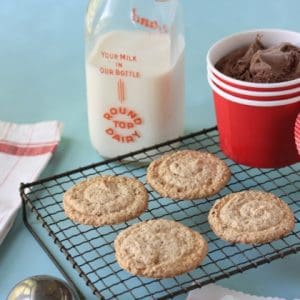

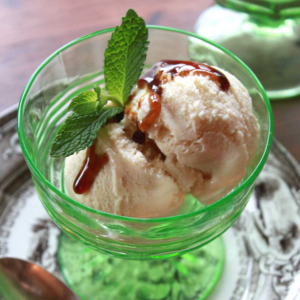
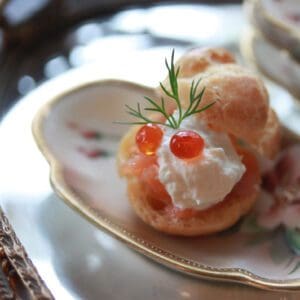
Be the first to hear about my latest events, tutorials, and product announcements by subscribing to my newsletter!
Schedule willing, I release one each month, roughly mid-month. And, guess what else?! Once you subscribe, you’ll receive a special one-time coupon code for 20% off my online tutorials. The code will be delivered in your subscription confirmation email, so keep your eyes peeled (as it cannot be resent). Thanks in advance for subscribing!
Live sweetly, Julia